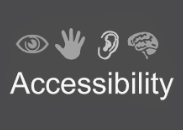Over the years, Capacitive and Resistive touch screens have been widely used as the two most reliable touch-sensing technology. However, original equipment manufacturers (OEMs) have an excellent choice for touch sensors – IR (Infrared) Touch Screens. For applications where capacitive or resistive touch technology doesn’t fit right, IR touch screens are considered the best alternative.
Here’s an overview of IR touch screens to understand how they work and the advancements offered by A D Metro in this technology.
Overview of IR- Infrared Touch Screens Technology
The process of identifying the touch command in IR touch applications is totally different and unique when compared to its counterparts. Resistive touch screen devices are pressure activated and register the touch command when their upper and bottom layers are pressed against each other, and capacitive touch sensors detect touch commands by measuring changes in capacitance or by capacitively coupling X and Y elements together. IR touch screens, on the other hand, identify touch commands with interruptions in uniform beams of light.
An infrared touch screen application is composed of a frame outfitted with LEDs and photodetectors. The frame has an optical bezel or protective cover that enables LEDs to emit infrared beams, invisible to the naked eye. This process creates an optical grid on the display’s surface, and during the touch event, it blocks some of the light beams, allowing photodetectors to detect these interruptions.
Why IR Touch Screens are the Best Alternative to Other Touch Screen Technologies
IR (Infrared) touch screens are considered the perfect alternative to conventional touch screens. The following reasons make them the ideal choice of OEMs:
- Cost-effective solutions – When it comes to applications of large sizes, IR touch screens are relatively cheaper than other touch screen technologies available on the market.
- Since no substrate glass with any conductive coatings are required for IR touch sensors, there is no degradation of any kind in the display’s image since nothing covers the display as in resistive and capacitive sensors..
- Quick response time –Infrared touch screens are quick to respond with exact actions, generally less than 8ms.
- Survive scratches – Infrared touch applications are designed with a protective glass layer on top that helps prevent scratches on the display screen.
- Flexibility in customizing screen sizes – IR touch screen technology offers flexibility to custom design an application by simply adjusting the number of LEDs and photodetectors embedded over the frame.
Advancements in Infrared (LCIR) Touch Technology by A D Metro
The mentioned advantages no doubt give good reasons to use IR touch screens, however, to make this technology more efficient to use A D Metro has developed Linear Correlating Infrared (LCIR) touch technology.
A D Metro’s innovative LCIR solution is an excellent choice for applications that require multi-touch features but have difficulty integrating projected capacitive (PCAP) touch sensors. Even when exposed to challenging environments such as strong radio frequency interference (RFI) and full sunlight interference, LCIR technology offers:
- 100% optical clarity/maximum contrast due to the absence of substrate layer
- Reliable two-touch functionality
- Gloved fingers and 5mm stylus touch input compatibility
- 100% sunlight immunity including strobing sunlight.
Linear correlating infrared technology (LCIR) can tolerate any sunlight exposure, including strobing sunlight which is important for applications used in helicopters for instance. LCIR offers consistent performance across temperature and pressure extremes.







